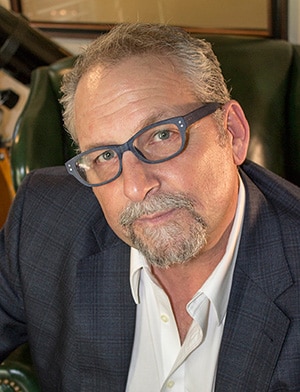
(By Paul Weyland) As I travel across the country working with broadcast stations, I see a lot of long-term local direct business on the table — business that should be on the books by now but is not. Because it’s still on the table. Money, just sitting there on the table. So why won’t these decision-makers close? For a variety of reasons, many of which can be traced back to one party: you. Let’s examine how we get so close, yet it seems we’re still light years away from the reward, a signed annual contract.
It’s a fact that people will usually buy only after they are finally convinced beyond a shadow of a doubt that your plan for their success is better than theirs. Is it possible that you are so close to that point that you can almost taste success, yet your client still has some hidden objection that is keeping her from saying yes?
If you suspect that’s the case, then why aren’t you trying to dig out that secret objection? Sometimes it’s just time to ask the client, “Is there some reason that I’m not aware of that you aren’t ready to commit? You seem to love our idea. What’s keeping you from pulling the trigger?”
Are you using closing techniques to get the client to say yes? Here are a variety of good, tested ways to get the client to sign — or at least tell you what the objection is. And remember, the objection is the objective. Here are my favorites.
Direct close. After the presentation, you say, “Hey, let’s do it.” That means, “Hey, let’s us do this!” If the client has no objections, he will sign. If he does have objections, he won’t. At that point, we dig until we find the objection.
Summary close. After you’ve finished your presentation, the client sometimes says nothing. At that time, I go back through my presentation step by step, carefully noting if the client winces or verbally objects at any point. If there’s no objection, I go to the direct close, “So, let’s do it!”
Assumptive close. One of my favorites. Going into the presentation, I just “assume” they’re buying. “Here’s what we’re going to do,” I say. When I finish the presentation, back to the direct close.
Minor point. You present an Idea A and an Idea B. You say, “I like ‘A.’ How about you?” You wait for any objections, answer them, and go back to direct close.
Pen close. You finish your presentation. You pass your agreement along with a pen so that the client can sign and ask the client to sign the document. If the client doesn’t pick up the pen, she is telling you no. If the client picks up the pen and plays with it, she has objections but is still in the game. Or if you have successfully handled all objections, the client will sign.
How much would you pay? Last-ditch effort. The client insists that you’re just “too expensive.” In other words, you have failed to convince the client beyond a shadow of a doubt that your idea has enough value for the price you want. You ask, “Well, how much would you pay?” Not that you would sell it for that price, but at least you are establishing that the client finds some value in your proposal. At that point you have to work to educate the client and earn his agreement that your idea is worth the price you’re asking.
Are you certain you’re dealing with the actual decision-maker? I mean, is she the person in a position to actually authorize the funding for your idea? Because many times, you find you’re “barking up the wrong tree.” You’re speaking to the son or daughter, but in reality, mom or dad controls the purse strings. Or the person you’ve been pitching is a marketing director with no permission at all to authorize a purchase.
Did you pre-qualify the prospect you’re pitching? What if they literally have no money to fund the campaign, but are embarrassed to tell you? However, if they say, “We don’t have any money right now,” pay attention to the last two words, “right now.” You should say, “When you say right now, you mean…” and the client will tell you when they will have the budget.
Do your homework. Study your prospect before your presentation. Make a deliberate effort to close. Mix up your closes. Fish out and answer any objections. Ask for the order. And don’t leave any money on the table.
Paul Weyland is the go-to person for expertise in increasing long-term local direct broadcast business. You can contact Paul at (512) 236-1222. https://paulweyland.com





